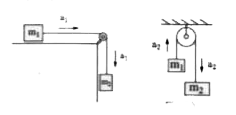In case of high spin situation
Δ0=P
Δ0>P
Δ0<P
Δ0P=1
The correct Answer is:C
To solve the question regarding high spin situations in coordination compounds, we can break down the explanation into a step-by-step process:
1. Understanding High Spin vs. Low Spin:
- High spin complexes are characterized by having unpaired electrons, resulting in paramagnetism. This occurs when the energy required to pair electrons (pairing energy, P) is greater than the energy gained from the splitting of d-orbitals (splitting energy, Δ).
2. Identifying Splitting Energy and Pairing Energy:
- In coordination compounds, particularly in octahedral complexes, the d-orbitals split into two sets: the lower energy set (t2g) and the higher energy set (eg).
- The relationship between Δ and P determines whether the complex will be high spin or low spin.
3. Case Analysis:
- Case 1: Δ > P (Strong Field Ligands)
- Electrons will pair up in the t2g orbitals before occupying the eg orbitals. This results in a low spin configuration with paired electrons.
- Case 2: Δ < P (Weak Field Ligands)
- Electrons will occupy the eg orbitals before pairing in the t2g orbitals. This results in a high spin configuration with unpaired electrons.
4. Conclusion for High Spin Situation:
- For a high spin situation, we conclude that it occurs when the splitting energy (Δ) is less than the pairing energy (P). This allows for maximum unpaired electrons in the d-orbitals.
5. Final Answer:
- Therefore, in the case of high spin situations, the condition is Δ < P.
- High spin complexes are characterized by having unpaired electrons, resulting in paramagnetism. This occurs when the energy required to pair electrons (pairing energy, P) is greater than the energy gained from the splitting of d-orbitals (splitting energy, Δ).
- In coordination compounds, particularly in octahedral complexes, the d-orbitals split into two sets: the lower energy set (t2g) and the higher energy set (eg).
- The relationship between Δ and P determines whether the complex will be high spin or low spin.
- Case 1: Δ > P (Strong Field Ligands)
- Electrons will pair up in the t2g orbitals before occupying the eg orbitals. This results in a low spin configuration with paired electrons.
- Case 2: Δ < P (Weak Field Ligands)
- Electrons will occupy the eg orbitals before pairing in the t2g orbitals. This results in a high spin configuration with unpaired electrons.
- For a high spin situation, we conclude that it occurs when the splitting energy (Δ) is less than the pairing energy (P). This allows for maximum unpaired electrons in the d-orbitals.
- Therefore, in the case of high spin situations, the condition is Δ < P.
Topper's Solved these Questions
- ALCOHOLS, PHENOLS AND ETHERSBOOK - AAKASH INSTITUTE ENGLISHCHAPTER - ALCOHOLS, PHENOLS AND ETHERSEXERCISE - Try yourself
5 Videos
- ALCOHOLS, PHENOLS AND ETHERSBOOK - AAKASH INSTITUTE ENGLISHCHAPTER - ALCOHOLS, PHENOLS AND ETHERSEXERCISE - Exercise
40 Videos
- ALCOHOLS, PHENOLS AND ETHERS BOOK - AAKASH INSTITUTE ENGLISHCHAPTER - ALCOHOLS, PHENOLS AND ETHERS EXERCISE - Try Yourself
5 Videos
Similar Questions
Knowledge Check
NEERI is situated in
ADelhiBMumbaiCNagpurDBangaluruThe third ventricle of the brain is situated in the
Abase of telencephalonBroof of metencephalonCroof of diencephalonDbase of prosencephalon
Crystal field stabilization energy for high spin d4 octahedral complex is
View SolutionThe values of the crystal field stabilization energies for a high spin d6 metal ion in octahedral and tetrahedral fields, respectively, are :
View SolutionCrystal field stabilization energy of high spin complex cation having d5 configuration in an octahedral field is
View Solution
The situations are shown in fig(a) & (b), in each case, m1=3kg and m2=4kg. If a1,a2 are the respective accelerations of the blocks in these situations, then the values of a1 and a2 are respectively [g=10 ms−2]
View SolutionIn each case m1=4kg and m2=3kg. If a1 and a2 and a3 are the respective acceleration of the block m1 in given situation, then

View SolutionFor which of the followng dn configuration complexes, can not exist in both high spin and low spin forms:
(I) d3
(II) d5
(III) d6
(IV) d8
View Solution
